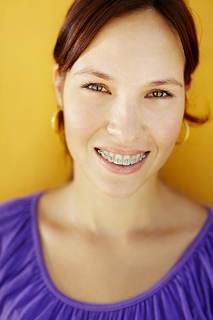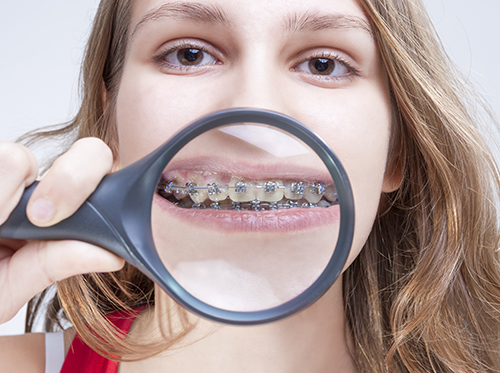September 21st, 2022

If you have been thinking about undergoing orthodontic treatment to straighten teeth or correct jaw alignment, the first step is scheduling an orthodontic consultation at Davis Orthodontics. During the consultation we will actively listen to your concerns and address all of your questions, as well as discuss a treatment options that would best suit you or your child's situation.
Here are the top five questions that most patients want answered during their initial orthodontic consultation:
- Can I benefit from orthodontic treatment, and if so, how long will it take?
- How frequently will my appointments be scheduled?
- Can I expect any pain when getting braces? (Ask Dr. Allen about the ways we address pain management).
- Will I need to have teeth extracted, headgear, expansion appliance, etc.?
- How much will it cost and what payment options do you offer?
Visit our website for more answers to your questions prior to your initial consultation. Dr. Allen and our team at Davis Orthodontics are happy to answer all your questions and concerns, and excited to explain all aspects of your treatment plan, as well as the expected outcome. We believe your orthodontic experience should be comfortable, hassle-free, and most importantly, leave you with the smile you've always wanted.
September 14th, 2022

We hear this question a lot at Davis Orthodontics, and we don’t mind when patients who are eager to complete their orthodontic treatment ask us. After all, we know there is no better feeling than getting your braces off!
During your initial consultation with Dr. Allen, we will map out a specific treatment for you and will try our hardest to give you a timeline of when we expect you to wrap up treatment.
Having said that, we know every patient is different. People have different biological responses to orthodontic treatment and some people’s teeth may move faster than others.
Luckily, there are things you can do to ensure your treatment wraps up in a timely manner. By following these suggestions, you can avoid any setbacks during your treatment.
- Make sure to keep your adjustment appointments. Postponing or cancelling will delay treatment!
- Be sure to show up on time to your appointments. This will give Dr. Allen and our team time to do everything we planned during your adjustment visit.
- When prescribed, make sure you are diligent about wearing rubber bands or other appliances.
- Avoid damage to your braces and teeth by wearing a mouth guard during sports activities.
- Make sure to brush and floss regularly! Gum disease or other dental work can delay orthodontic treatment.
If you remember to follow these guidelines, you’ll be on your way to having the dazzling, healthy smile you’ve always wanted. As for us, our team at Davis Orthodontics will do our part to move your orthodontic treatment along efficiently. If you have any questions about your treatment time, please give us a call at our San Diego office or ask us during your next visit!
September 7th, 2022

School can present a few issues when it comes to caring for your braces and mouth, since you won't have the luxury of the time and tools you have at your disposal while you're at home. But if you head to school prepared, you shouldn't have any trouble keeping your braces and mouth in great shape. Below is a list of helpful tips to care for your braces throughout the entire school year.
- Bring a kit that includes all of your oral health care items. This is a seriously smart thing to do and probably the most important of all the tips. Pack things like a toothbrush, floss, wax, retainer case (if needed), a mirror, a small cup for rinsing, a small bottle of water (if you don't already have some water with you), and some OTC pain medicine or a natural pain remedy. Keep the kit in your locker or backpack. Having all these items on hand will save you a lot of trouble and discomfort, and also ensure you don't have anything unsightly stuck in your braces or teeth!
- Take advantage of breaks and lunchtime. After eating lunch is a great time to pop into the restroom and give your braces and teeth a once over to make sure you don't have any food debris caught in them and to tend to any sore spots. If you've just had your braces adjusted, you may have soreness on your gums or cheeks. This is where the wax you packed will come in handy.
- Eat the right food for your braces. Avoid all the foods that wreak havoc on your braces like gum, candy, popcorn, hard chips, apples which aren't cut into wedges, nuts, beef jerky, ice, etc. You know the foods we're talking about; you've heard it enough already. Steering clear of these foods will help you prevent any possible mishaps with your braces, like breaking a bracket or wire, which is the last thing you want happening at school.
If you follow these tips and also keep up on your oral health routine at home, you'll be maximizing the effectiveness of your braces and making them as comfortable as possible. Do you have questions about caring for your braces during the school day? Ask Dr. Allen or anyone in our San Diego office and we'll gladly help you out!
August 31st, 2022

Labor Day honors the contributions that workers have made to this country, and for many Americans, the holiday is a great time to relax at home with family and friends. But there are quite a few people who celebrate the holiday by getting out of town, with an estimated 33 million people traveling more than 50 miles over Labor Day weekend each year. If you’re dreaming of a great Labor Day escape but you’re not quite sure where to go, here are a few ideas from our team at Davis Orthodontics to give you some travel inspiration.
Explore a National Park
On a national holiday like Labor Day, it’s only fitting to experience the beauty of America’s landscapes by heading to the nearest national park. If you’re confined to an office most days of the year, national parks can provide a relaxing and scenic escape, whether you’re by yourself, traveling with a group of friends, or bringing the whole family along. Depending on how close you live to the nearest park, you can stay for an afternoon or for longer than a week. With 58 parks located in 27 states, there are plenty of beautiful areas to choose from.
Chow Down in a BBQ Haven
Barbecuing is a popular Labor Day activity, but instead of sweating over your own grill or oven, try visiting one of the country’s BBQ capitals. U.S. News and World Report names Memphis as the top BBQ destination, with more than 80 BBQ restaurants in the city, most notably Corky’s BBQ and Central BBQ. Kansas City is also known for the sweet taste of its sauces, while central Texas is said to have perfected the technique of smoking tender and flavorful brisket.
Relax on the Beach
Many people think of Labor Day as the unofficial start of fall, which brings cooler temperatures, more rain, and for many people, an end to lazy days at the beach. End your beach days with a bang by taking a trip to one of the coasts or to a lakeside beach. For an added dose of festivity, find a city or town that celebrates the occasion with a fireworks display over the water.
Whether you’re looking to turn your getaway into a full week affair or you simply want to experience a quick escape, make the most of your holiday by changing your surrounding scenery. Happy Labor Day from the orthodontic practice of Dr. Allen!





